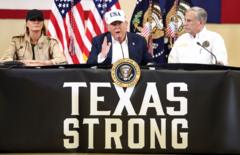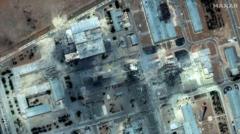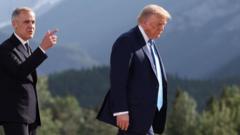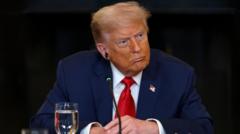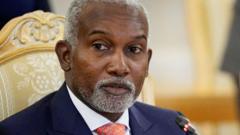The U.S. delay on imposing tariffs illustrates the challenges the Trump administration faces in negotiating trade deals, as global partners grow increasingly frustrated, and economic data suggests a shift in trade patterns.
Trump’s Tariff Delays Echo Global Trade Tensions
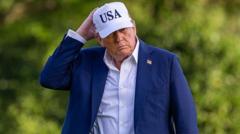
Trump’s Tariff Delays Echo Global Trade Tensions
As President Trump postpones tariff decisions, countries push back against U.S. trade tactics.
The Trump administration recently announced an extension on tariff decisions that were initially promised to materialize in a flurry of agreements. Instead of the anticipated “90 deals in 90 days,” it seems that by the deadline of 9 July, fewer than nine agreements are likely to be finalized. This delay, pushed back to 1 August with further extensions possible, demonstrates a significant shift in the administration's negotiating strategy, as it tries to manage mounting frustrations from global trade partners.
According to Treasury Secretary Scott Bessent, the focus remains on the 18 countries responsible for a substantial 95% of America’s trade deficit. However, the letters sent from Washington to these nations have drawn criticism, reminding many of past administration strategies that ultimately failed to deliver substantial outcomes. These correspondences maintain tariff rates similar to earlier announcements made in early April, echoing the administration's persistent belief that trade dynamics equate to "the sum of all trade cheating."
Despite previous market fluctuations related to trade fears, the current delay appears to have not provoked major unrest within the financial markets. Traders are beginning to show acceptance of the ongoing postponements encapsulated in the acronym "TACO," or “Trump Always Chickens Out.” This could possibly embolden reluctant nations to stall negotiations further, complicating efforts for an effective resolution.
Key US allies, including Japan and South Korea, expressed discontent toward the US tactics, with Japan’s finance minister indicating a potential leverage through its holdings of U.S. government debt. The approach, viewed as inflexible, is breeding an environment where the global community observes a shift in trading relations.
While U.S. tariffs prompt US Treasury revenues, trends in global exports reveal that nations outside the U.S. are increasingly seeking to strengthen their bilateral trade ties. This is evidenced by a significant uptick in exports from China to other countries, including marked rises in exports to the UK and ASEAN nations. Meanwhile, the dollar’s value has dipped by 10% this year, contradicting earlier predictions that suggested tariffs would bolster its strength.
As effective tariff rates climb to around 15%—a notable increase from historical rates of 2% to 4%—the question remains whether the current calm in markets will persist or whether rising tensions will trigger renewed instability in international trade relations. It is clear that the complexities of the trade landscape are evolving, leading to broader ramifications for the U.S. economy and its standing in global markets.


